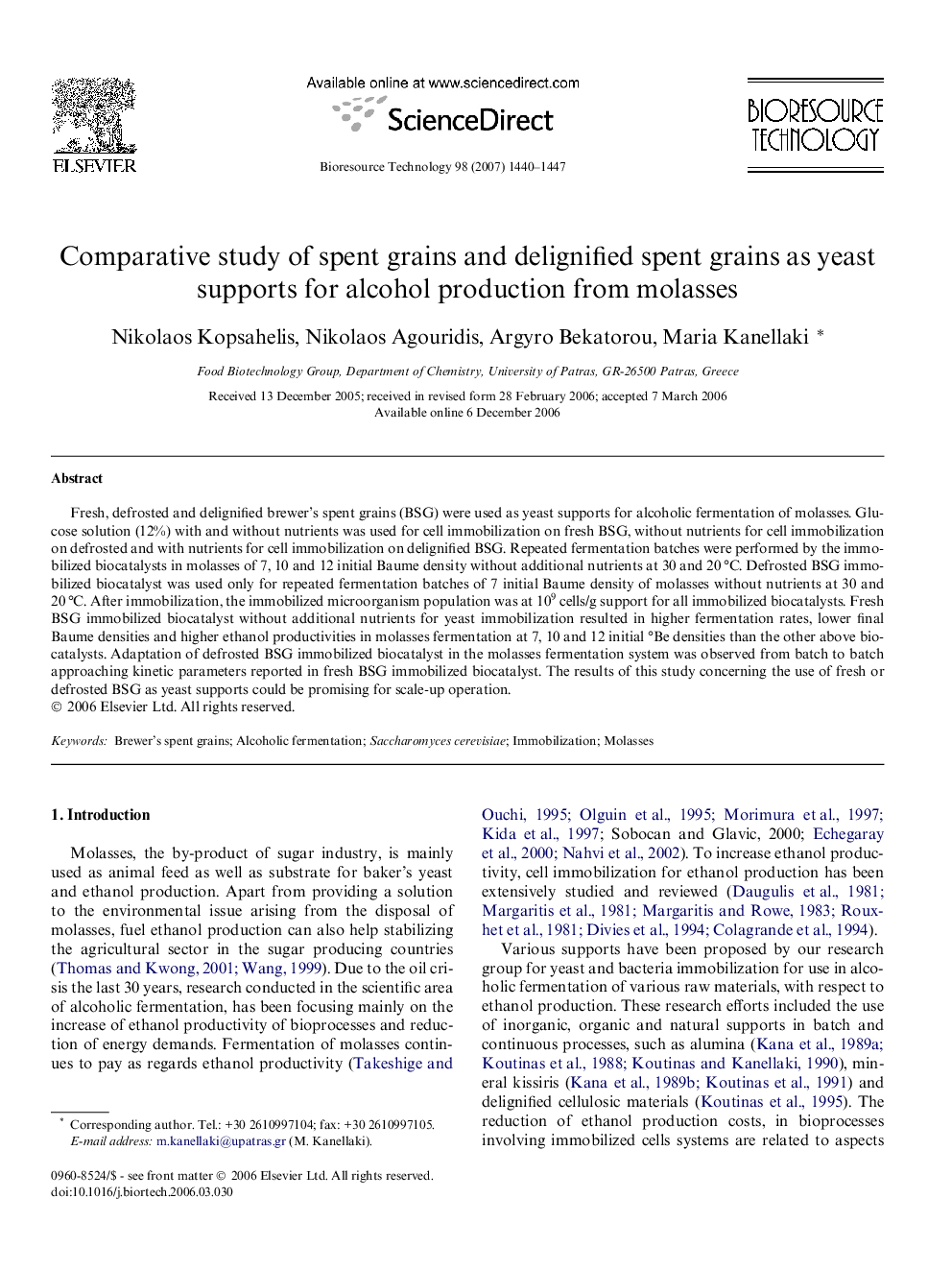| Article ID | Journal | Published Year | Pages | File Type |
|---|---|---|---|---|
| 686558 | Bioresource Technology | 2007 | 8 Pages |
Fresh, defrosted and delignified brewer’s spent grains (BSG) were used as yeast supports for alcoholic fermentation of molasses. Glucose solution (12%) with and without nutrients was used for cell immobilization on fresh BSG, without nutrients for cell immobilization on defrosted and with nutrients for cell immobilization on delignified BSG. Repeated fermentation batches were performed by the immobilized biocatalysts in molasses of 7, 10 and 12 initial Baume density without additional nutrients at 30 and 20 °C. Defrosted BSG immobilized biocatalyst was used only for repeated fermentation batches of 7 initial Baume density of molasses without nutrients at 30 and 20 °C. After immobilization, the immobilized microorganism population was at 109 cells/g support for all immobilized biocatalysts. Fresh BSG immobilized biocatalyst without additional nutrients for yeast immobilization resulted in higher fermentation rates, lower final Baume densities and higher ethanol productivities in molasses fermentation at 7, 10 and 12 initial °Be densities than the other above biocatalysts. Adaptation of defrosted BSG immobilized biocatalyst in the molasses fermentation system was observed from batch to batch approaching kinetic parameters reported in fresh BSG immobilized biocatalyst. The results of this study concerning the use of fresh or defrosted BSG as yeast supports could be promising for scale-up operation.
